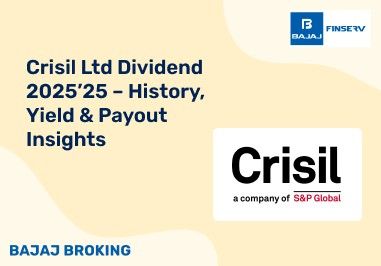Based on some tried and tested pre-set rules, a trading strategy is important for how you function in the market. Whether you're a seasoned investor or just starting, having a clear strategy is crucial. It helps you manage risk, optimize returns, and maintain discipline, avoiding emotional pitfalls. The ultimate goal is to maximize the benefits of your investment, ensuring that each move is calculated and aligned with your financial objectives. In this blog, we'll explore what a trading strategy entails and guide you on how to develop one tailored to your needs.
Understanding Trading Strategies
Before going any further, let's first understand what is a trading strategy. A trading strategy is an individual's methodology or pre-set rules on buying and selling securities. A well-defined trading strategy is developed after taking some important considerations into mind. This includes factors like risk abilities, tax implications, investment goals, and so on.
While designing a trading strategy, both: investors and brokers work together to pick the most suitable trading solutions.
Importance of Having a Trading Strategy
The trading strategy's importance can be seen in guiding you on how to go ahead in the market. It notes all the important fundamentals and technical details to minimise the risks and reduce any kind of negative impact on their financial instruments.
However, it is important to develop a trading strategy that is clear, concise, consistent, and verifiable. It is equally important to adjust your strategy to changing times and patterns.
Key Components of a Trading Strategy
Now that you are aware of trading strategy's meaning and importance, let's go ahead and have a look at its components:
Risk Tolerance
Risk tolerance, as the name suggests, is the risk-taking ability of an investor during their trading activities. The risk-taking ability of an investor keeps changing throughout their trading lifecycle.
Technical Metrics
By carefully monitoring technical metrics like balance volume, moving averages, and relative strength, an investor can predict market fluctuations and note the possible market risks and possibilities. With such info in hand, you make the best returns on your investment.
Trading Products
Your trading strategy depends a lot on your trading products and their value. Each financial product offers different risks, potential, and liquidity. To ensure you design a good enough portfolio, make sure to invest in several different products.
Types of Trading Strategies
Now that you know the trading strategy's meaning and its importance, let's move ahead with its different types and how to develop these trading strategies.
Technical Trading Strategy
Technical trading strategies are developed based on the market's quantifiable updates. Here, the strategies are laid down and updated based on technical indicators like moving average, market strength, and so on.
Fundamental Trading Strategy
A fundamental trading strategy is very similar to a technical strategy in terms of its reliance on market quantifiable information. However, fundamental strategies are developed by analysing fundamental factors like profitability, price-to-earning ratio, etc.
Quantitative Trading Strategy
This strategy is very much like technical trading, however, it involves a much bigger matrix. A quantitative strategy can be developed using stock details to finalise your buying and selling decisions.
Common Mistakes to Avoid in Trading Strategies
The trading strategy's importance is enough to showcase why you need to master this art. However, it is natural to make trading mistakes even after consistent dedication and persistent efforts. What's more important is to learn from those mistakes to ensure you don't repeat them further.
Designing a technical or any other trading strategy is a step-by-step art and it needs to be that way only. So, instead of jumping in directly and making big decisions, follow a step-by-step learning procedure to understand the market details and movements.
Once you know the function and trading strategy's meaning, you know that it needs adjustments. However, these adjustments need not be too frequent and unnecessary. Instead, change the strategy only when it repeatedly fails even for the scenario you designed it.
Your trading strategy needs to be designed with your research and not emotions. Make sure your emotions don't control how you make your trading decisions.
Conclusion
Understanding the trading strategy’s meaning can guide you through your investments. You can personalize your trading strategies to reduce the risks and improve your earnings. To successfully implement your strategy, follow the trading style and time as mentioned in the plan. Assess the market and understand what trading options best suit you according to your strategy. Further, monitor your trading strategies. Give them some time to see their performance. And make necessary changes according to the market demand. And that's it, here is everything you need on how to start trading.
Disclaimer: Investments in the securities market are subject to market risk, read all related documents carefully before investing.
This content is for educational purposes only. Securities quoted are exemplary and not recommendatory.
For All Disclaimers Click Here: https://bit.ly/3Tcsfuc













